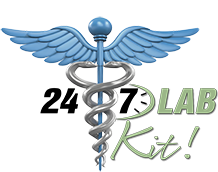How can monkeypox be mistaken for a “gay disease” or STD
According to health officials, monkeypox is identified by clustering of blister-like rashes, which has also contributed to the disease being misdiagnosed as a specific sexually transmitted disease. The virus seems to spread like sexually transmitted diseases (STDs) do: through close, personal contact. However, a frequent misdiagnosis could allow monkeypox to spread unnoticed, depriving infected people of the proper therapy.
Monkeypox is assumed to transmit mostly by big respiratory droplets, interaction with sores, and sharing items such as bed linens or clothing with someone who is shedding the virus. According to experts, most of those new cases have been related to men who have intercourse with other guys, implying that the virus spreads through sexual connections. As a result, 247labkit has been working hard to provide accurate information on the outbreak.
The history of monkeypox misunderstanding
This public health history stretches back to the early years of the HIV/AIDS pandemic, which negatively affected and continues to afflict the LGBTQ population.
The current monkeypox strain is usually minor, and symptoms will go away independently. However, potent antivirals are available for the treatment of the infection. According to the US Centers for Disease Control and Prevention, most infections related to this current outbreak have been in men who have intercourse with men. Although many cases were discovered at sexual health clinics, health officials have emphasized that there is no proof of spread via seminal or vaginal secretions.
“Monkeypox is not a sexually transmitted infection in the traditional sense,” said Laura Bachmann, director of the Centers for Disease Control and Prevention’s Division of STD Prevention.
Previous monkeypox outbreaks were reported outside of Africa, although these cases are usually linked to travel to the continent or spillover from infected animals. However, there is no evidence of either catalyst in this most recent episode of monkeypox. In several interviews, specialists expressed fear that sexual contact may be the source of the virus’s transmission.
Knowing how to stop the disease is crucial to understanding the major channels it uses to propagate.
While monkeypox is spreading through sexual networks, Amesh Adalja, a senior scholar at the Johns Hopkins Center for Health Security in Baltimore, said it’s unclear how that happened.
“Is it the close skin-to-skin contact that causes the dissemination of respiratory secretions during sexual encounters?” Or is it a sexually transmitted infection that spreads through the exchange of body fluids during sex?” Adalja remarked.
According to research from European health officials, sexual transmission of monkeypox was previously assumed to occur infrequently, if at all. In general, infections can spread through various pathways, and studies have recently revealed that some infectious diseases can transmit through sex. For example, the mosquito-borne illnesses Zika and dengue, as well as Ebola, can be spread sexually. Shigella, a prominent cause of food poisoning, is becoming more well recognized as a sexually transmitted bacterium.
Looking more like an STD
According to the CDC, clinicians must be alert for rashes in anyone who has already had close, personal contact with other people. According to the CDC, traveling to pandemic locations and connection with suspected or confirmed cases are additional grounds for increased worry. Because monkeypox is not commonly detected in the United States, doctors may be more likely to mistake the telltale rash for an STD. On the other hand, Monkeypox requires a different treatment than typical STDs; thus, a correct diagnosis is essential.
Health experts in the United States and the United Kingdom warn that the cases have previously been misdiagnosed as sexually transmitted diseases (STDs). Doctors from the CDC told reporters that one early case was mistakenly diagnosed as “severe herpes” rather than monkeypox.
According to the CDC, most of the cases documented so far have appeared at health centers with sores in the vaginal area, which could be mistaken for syphilis or herpes. Another aspect of the new outbreak that makes patients more challenging to diagnose is lesions on the genitals, which are less closely correlated with the disease. The face is the most prevalent location for the rash, followed by the palms of the hands and the soles of the feet. According to the CDC, some of the latest cases did not develop a fever or any other typical flu-like symptoms associated with monkeypox.
The first recorded cases in Montreal sought treatment at sexually transmitted illness clinics. According to the Canadian Press, health officials initially thought they were dealing with cases of chancroid. This bacterial disease produces painful genital ulcers until they learned of a monkeypox case in the United States and changed the focus of their research.
Tamping the stigma down
While most instances have been reported in guys who have had intercourse with other men, health experts have warned that this isn’t a disease exclusive to a certain population.
The European Centre for Disease Prevention and Control has also stated that public participation is a top priority and that measures should be put in place to prevent the stigmatization of monkeypox because of sexual orientation. In a study, the agency stated that “risk communication messages may also emphasize that monkeypox virus infection is neither indicative of someone’s sexual orientation, nor that the latter influences their susceptibility to the disease.”
In the United States, the CDC is working with LGBTQ community stakeholders to promote awareness about monkeypox, including collaborating with the sexual health organization Building Healthy Online Communities to look into bringing outbreak information.
“Right now, some groups may have a higher risk of exposure,” said Christina Hutson, director of the CDC’s Poxvirus Branch. “However, the current risk of monkeypox exposure is not limited to the gay and bisexual population.”




Comments are closed